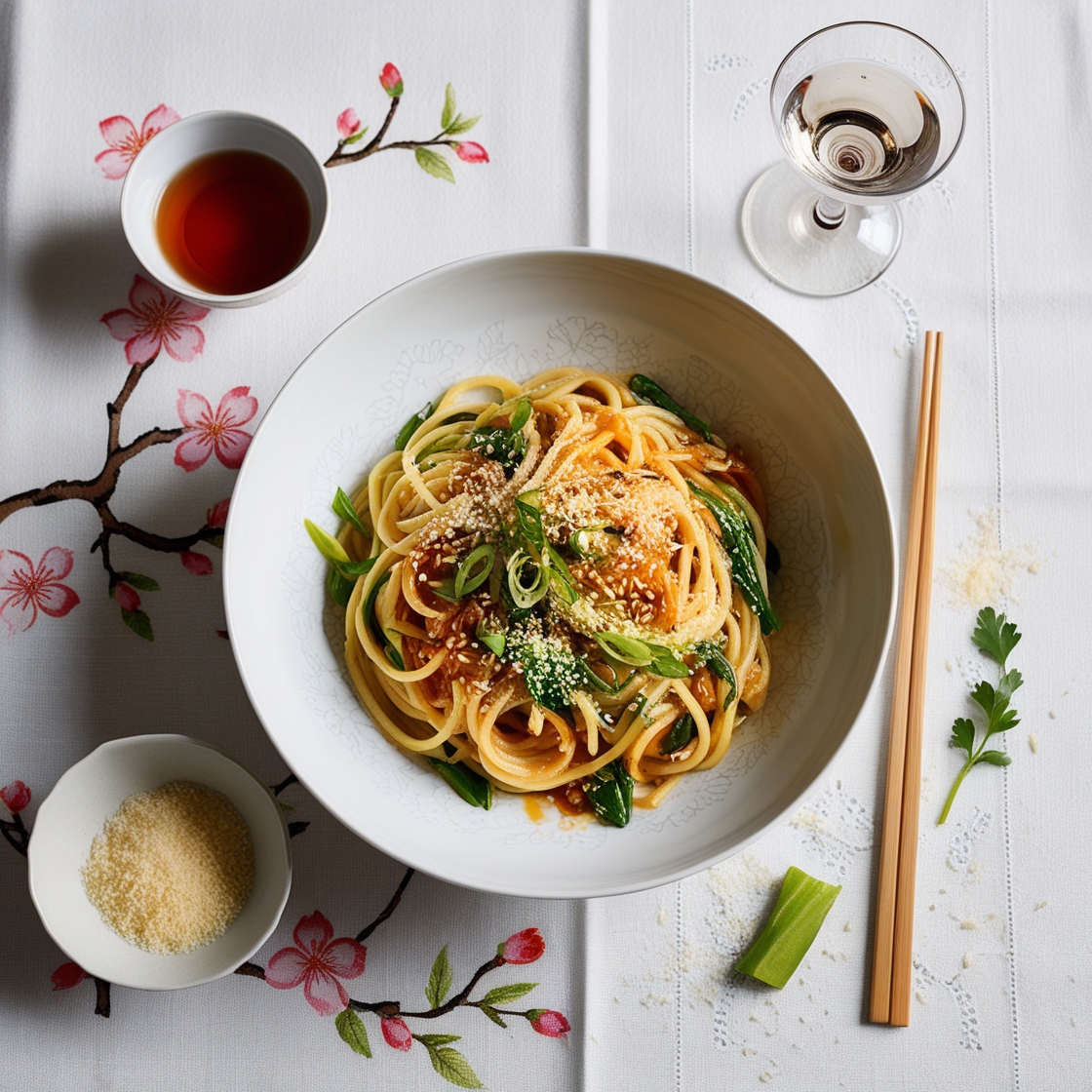Introduction
Fusion cuisine is where the magic of culinary worlds collide, creating dishes that tantalize the taste buds and break traditional boundaries. One particularly delightful combination is Italian and Japanese cuisine, merging the hearty, comforting flavors of Italy with the delicate, umami-rich tastes of Japan. Intrigued? Let’s dive into this culinary adventure and discover how to create a unique pasta dish that brings these two worlds together.
History of Fusion Cuisine
Fusion cuisine isn’t a new concept. It has been around for centuries, evolving as different cultures interacted and exchanged culinary techniques and ingredients. From Tex-Mex to sushi burritos, fusion dishes have become a staple in global gastronomy. They not only offer a fresh take on traditional recipes but also celebrate cultural diversity through food.
Why Combine Italian and Japanese Flavors?
Combining Italian and Japanese flavors might seem unconventional at first, but these cuisines share a surprising number of complementary elements. Both emphasize fresh, high-quality ingredients and simple yet effective cooking techniques. The rich, savory flavors of Italian cuisine blend harmoniously with the umami and subtlety of Japanese dishes, resulting in a balanced and flavorful meal.
Key Ingredients in Italian Cuisine
Italian cuisine is renowned for its simplicity and emphasis on fresh ingredients. Key components include:
- Pasta: The backbone of many Italian dishes.
- Olive oil: Used for cooking and as a dressing.
- Tomatoes: Essential in sauces and salads.
- Herbs and cheeses: Basil, oregano, and Parmesan are staples.
Key Ingredients in Japanese Cuisine
Japanese cuisine focuses on umami-rich ingredients and minimalistic preparation methods. Key components include:
- Soy sauce: Adds depth and umami to dishes.
- Miso: Fermented soybean paste used in soups and marinades.
- Seafood: Fresh fish and shellfish are central to many dishes.
- Seaweed and rice: Fundamental in sushi and many other meals.
Common Techniques in Italian Cooking
Italian cooking techniques are all about bringing out the natural flavors of ingredients. These include:
- Pasta making: From scratch or store-bought, the quality of pasta matters.
- Slow cooking: Developing flavors in sauces and stews.
- Use of fresh ingredients: Ensuring every component is at its peak.
Common Techniques in Japanese Cooking
Japanese cooking emphasizes precision and balance. Techniques include:
- Sushi preparation: Crafting perfect rolls and nigiri.
- Tempura frying: Lightly battered and fried vegetables or seafood.
- Grilling and steaming: Simple methods that preserve flavor and nutrition.
Creating the Perfect Fusion Pasta Dish
To create a fusion pasta dish, start by selecting the right pasta. A noodle like linguine or spaghetti works well as it can hold up to both Italian sauces and Japanese broths. Next, choose Japanese ingredients that complement Italian flavors. Think of miso-infused tomato sauce or soy-glazed seafood.
Recipe: Italian-Japanese Fusion Pasta
Ingredients:
- 200g linguine or spaghetti
- 2 tablespoons olive oil
- 1 clove garlic, minced
- 200g shrimp or scallops
- 1 tablespoon soy sauce
- 1 tablespoon miso paste
- 200g cherry tomatoes, halved
- 1/2 cup vegetable or chicken broth
- Fresh basil leaves, chopped
- Seaweed flakes (optional)
- Parmesan cheese, grated
Instructions:
- Cook the pasta according to the package instructions. Drain and set aside.
- In a large pan, heat the olive oil over medium heat. Add the minced garlic and sauté until fragrant.
- Add the shrimp or scallops and cook until they start to turn pink.
- Stir in the soy sauce and miso paste until well combined.
- Add the cherry tomatoes and cook for another 2-3 minutes.
- Pour in the broth and bring the mixture to a simmer.
- Add the cooked pasta to the pan and toss to combine with the sauce.
- Garnish with fresh basil, seaweed flakes, and a sprinkle of Parmesan cheese.
- Serve immediately and enjoy!
Cooking Tips for Fusion Pasta
Balancing flavors is key in fusion cooking. Ensure that neither the Italian nor the Japanese elements overpower each other. Pay attention to cooking times and temperatures to maintain the integrity of both cuisines.
Pairing Suggestions
Pair this fusion pasta dish with a light white wine or sake to enhance the flavors. For side dishes, consider a simple green salad or steamed edamame.
Health Benefits of Fusion Cuisine
Combining ingredients from different cuisines can offer a broader range of nutrients. This fusion dish, for example, provides protein from seafood, vitamins from tomatoes, and healthy fats from olive oil.
Cultural Impact of Fusion Cuisine
Fusion cuisine reflects the dynamic and interconnected world we live in. It encourages culinary exploration and innovation, making dining experiences more exciting and culturally enriching.
Conclusion
Creating an Italian-Japanese fusion pasta dish is a delicious way to explore the world of fusion cuisine. By combining the best of both culinary traditions, you can enjoy a meal that is both unique and familiar. So, why not give it a try and bring a bit of culinary creativity into your kitchen?
